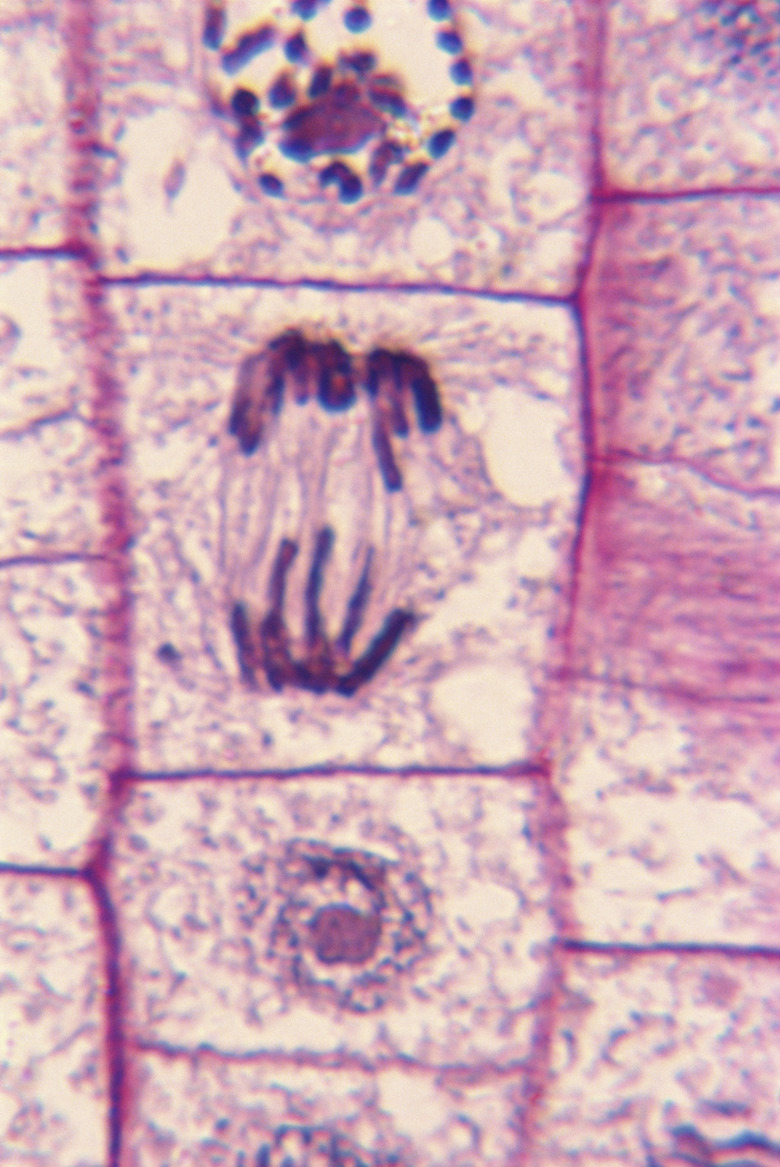The Packaging Of DNA Into Chromosomes
Your DNA holds all of the genetic material that determines your traits, ranging from your hair color to your propensity to develop chronic heart disease. All of that DNA is packaged into chromosomes in your cells. All eukaryotes have chromosomes, but bacteria don't. The number of chromosomes differs from species to species, and it is not correlated with the specific number of genes that species has.
DNA in Chromosomes
DNA in Chromosomes
Chromosomes are made up of long pieces of double-stranded DNA twisted and condensed into a compact package. If left uncondensed, the strands of DNA would be about two meters each, far too long to fit inside your cells. A person's entire DNA is separated into 22 matched pairs of chromosomes, plus two sex chromosomes, for a total of 46. Along the length of the DNA, some of the regions code for proteins, while others do not. The protein-coding sections are your genes, so each chromosome is home to hundreds or thousands of genes.
Packaging Chromosomes
Packaging Chromosomes
Specialized proteins bind to the DNA and help fold it properly so that it condenses into the tight configuration required to make chromosomes without getting tangled. The condensed DNA must also be configured so that enzymes can reach each part of it for repair, transcription, and translation. The basic DNA double helix is wound around histone proteins, and these DNA-protein complexes then fold into structures called nucleosomes. A strand of nucleosomes winds into a fiber called chromatin, which is about 30 nanometers in diameter and visible in an electron microscope. A chromosome is made up of tightly packed chromatin strands.
Timing
Timing
Chromosomes are more tightly packed at some points in the cell cycle compared to at other times. DNA is packed most tightly during mitosis, when the cell is actively dividing. During mitosis, the DNA is compacted by a factor of about 10,000. At other times, it is more loosely packed so that the genes are more accessible. During the interphase part of a given cell cycle, the DNA may be so loosely packed that individual chromosomes are not distinguishable. At interphase, the DNA is compacted about 1,000-fold. During the rest of the cell cycle, different portions of the chromosome become more compact and loosen up depending on whether access to that section is needed at a given time.
Parts of a Chromosome
Parts of a Chromosome
When the DNA in a chromosome is tightly packed, it takes on a configuration that resembles an X, or in the case of the male sex chromosome, a Y. Each individual chromosome is made of two telomeres, which make up the sides of the X, and a specialized sequence of DNA, called a centromere, that acts as a band holding the centers of the two telomeres together. A complex of proteins attaches to this centromere and binds it to the mitotic spindle, which pulls the two halves apart during replication. Each chromosome also has two telomeres, which cap off the ends of the DNA strand and protect it from degradation.
Cite This Article
MLA
Coila, Bridget. "The Packaging Of DNA Into Chromosomes" sciencing.com, https://www.sciencing.com/packaging-dna-chromosomes-3339/. 16 July 2018.
APA
Coila, Bridget. (2018, July 16). The Packaging Of DNA Into Chromosomes. sciencing.com. Retrieved from https://www.sciencing.com/packaging-dna-chromosomes-3339/
Chicago
Coila, Bridget. The Packaging Of DNA Into Chromosomes last modified August 30, 2022. https://www.sciencing.com/packaging-dna-chromosomes-3339/
